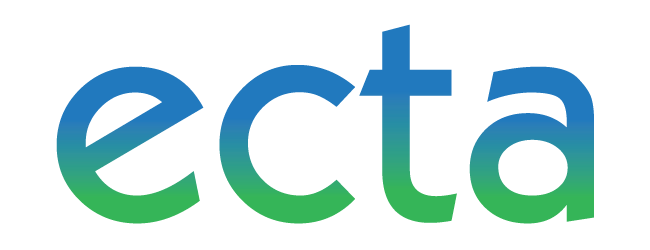IDEA Child Outcomes Highlights for FFY 2022
On This Page
What are the Outcomes?
The Individuals with Disabilities Education Act (IDEA) funds programs providing services designed to assist children with a range of delays and disabilities in achieving individualized developmental and functional goals. There are two types of programs. Part C Early Intervention is for children ages birth–2, and Part B Preschool is for children ages 3–5.
States report data annually to the Office of Special Education Programs (OSEP) in the U.S. Department of Education on three child outcomes for Part C and Part B Preschool programs:
- Social Relationships, which includes getting along with other children and relating well with adults
- Use of Knowledge and Skills, which refers to thinking, reasoning, problem-solving, and early literacy and math skills
- Taking Action to Meet Needs, which includes feeding, dressing, self-care, and following rules related to health and safety
How is Progress Measured?
The skills children master at different ages can be measured and described so that we can identify children who are developing too slowly. Children who are substantially behind their peers have developmental delays. OSEP has established five progress categories to convey developmental trajectories indicative of developmental delay. Categories a, b, c, and d represent some kind of delay in the early years, where category e illustrates typical development, with growth in outcomes and age in months in parity. States report annually to OSEP the percentage of children in each of the five progress categories (a–e).
OSEP Progress Categories as Developmental Trajectories
- Did not improve functioning
- Improved in functioning, no change in trajectory
- Moved closer to functioning like same-aged peers
- Improved functioning to that of same-aged peers
- Functioning like same-aged peers
From the progress category data, two Summary Statements are calculated for each outcome:
- Summary Statement 1 is the percentage of children who made greater than expected growth. The summary statement is calculated from the progress categories in the following way: (c + d) ÷ (a + b + c + d)
- Summary Statement 2 is the percentage of children who exited at or above age expectations. The summary statement is calculated from the progress categories in the following way: (d + e) ÷ (a + b + c + d + e)
National Child Outcomes Data for Children Exiting Part C and Part B Preschool in 2022–2023
| Outcome | Part C Early Intervention Summary Statement 1 | Part C Early Intervention Summary Statement 2 | Part B Preschool Summary Statement 1 | Part B Preschool Summary Statement 2 |
|---|---|---|---|---|
| Social Relationships | 66 | 51 | 80 | 52 |
| Knowledge and Skills | 71 | 42 | 80 | 49 |
| Action to Meet Needs | 69 | 51 | 79 | 59 |
Note: Data are based on 47 Part C states and 44 Part B Preschool states. Only states with high quality data were included.
National Trends Over Time: Summary Statements by Program and Outcomes
Part C Early Intervention: Summary Statement 1, FFY 2018–2022
| Outcome | FFY 2018 | FFY 2019 | FFY 2020 | FFY 2021 | FFY 2022 |
|---|---|---|---|---|---|
| Social Relationships | 65 | 64 | 66 | 66 | 66 |
| Knowledge and Skills | 74 | 69 | 71 | 71 | 71 |
| Action to Meet Needs | 76 | 71 | 70 | 69 | 69 |
Part C Early Intervention: Summary Statement 2, FFY 2018–2022
| Outcome | FFY 2018 | FFY 2019 | FFY 2020 | FFY 2021 | FFY 2022 |
|---|---|---|---|---|---|
| Social Relationships | 55 | 52 | 53 | 52 | 51 |
| Knowledge and Skills | 46 | 44 | 44 | 42 | 42 |
| Action to Meet Needs | 57 | 54 | 51 | 51 | 51 |
Part B Preschool: Summary Statement 1, FFY 2018–2022
| Outcome | FFY 2018 | FFY 2019 | FFY 2020 | FFY 2021 | FFY 2022 |
|---|---|---|---|---|---|
| Social Relationships | 81 | 81 | 78 | 79 | 80 |
| Knowledge and Skills | 82 | 82 | 79 | 79 | 80 |
| Action to Meet Needs | 81 | 81 | 79 | 79 | 79 |
Part B Preschool: Summary Statement 2, FFY 2018–2022
| Outcome | FFY 2018 | FFY 2019 | FFY 2020 | FFY 2021 | FFY 2022 |
|---|---|---|---|---|---|
| Social Relationships | 59 | 56 | 56 | 55 | 52 |
| Knowledge and Skills | 55 | 53 | 52 | 51 | 49 |
| Action to Meet Needs | 64 | 62 | 61 | 61 | 59 |
Conclusion
For Part C Early Intervention, a comparison of national averages from FFY 2021 to FFY 2022 showed that outcomes were largely unchanged. The only change was a decrease of one percentage point in children exiting at age expectation in social relationships.
For Part B Preschool, there was no change in the percentage of children making greater than expected progress in Action to Meet Needs and an increase in Social Relationships and Knowledge and Skills. There was a relatively large decrease in the percentage of children exiting at age expectation for all three outcomes.
State Part C and Part B Preschool annual performance reports provided key reasons for declines, including impacts of COVID-19, other data quality issues, and changes to state data collection methods. Further analyses, particularly at the state and local level, are needed to understand trends.
For information on why these data differ from OSEP IDEA SPP/APR Indicator Analyses, see Additional National Child Outcomes Data
Please cite as: Early Childhood Technical Assistance Center, Center for IDEA Early Childhood Data Systems. (2025). IDEA Child Outcomes Highlights for FFY 2022. Retrieved from https://ectacenter.org/eco/pages/childoutcomeshighlights.asp
Developed under a grant from the U.S. Department of Education, #H373Z240001, and a cooperative agreement, #H326P220002, from the Office of Special Education Programs. Contents do not represent the policy of the U.S. Department of Education, and you should not assume endorsement by the Federal Government. DaSy Project Officers: Meredith Miceli and Alexis Lessans. ECTA Project Officer: Project Officer: Julia Martin Eile.


